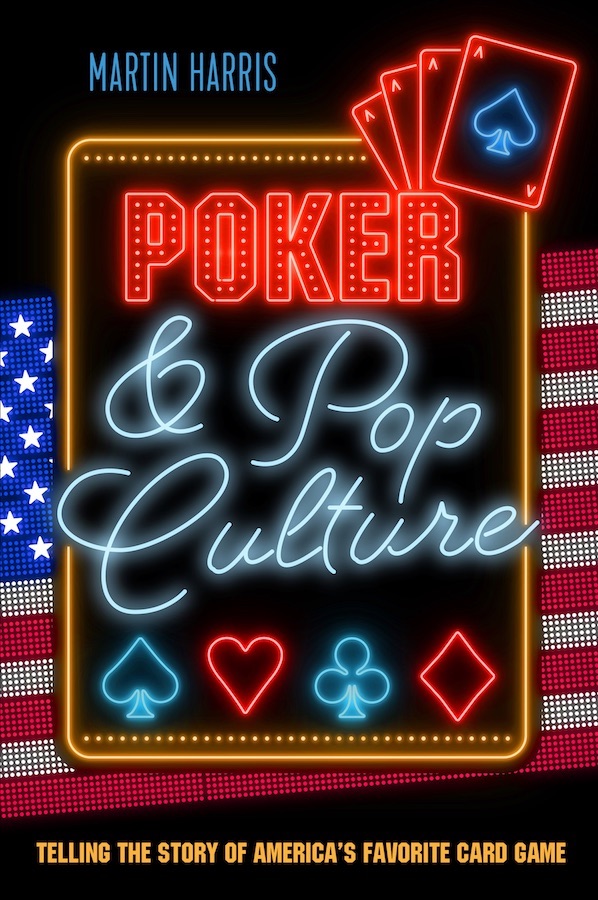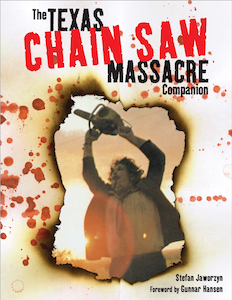Poker by ABC
Been reading The Biggest Game in Town again, the classic account of the 1981 WSOP by Al Alvarez. I recommend it all the time, even to non-poker players as the varieties of wisdom Alvarez offers extend well beyond the game. As an Englishman, Alvarez makes frequent observations about America’s values (both good and bad) and how Las Vegas -- circa ’81 -- dramatizes those values in full. I want eventually to write a post (or two) discussing the book at length, but wanted here just to bring up one item that comes up early on regarding the differences between limit poker and the high-stakes, no-limit variety Alvarez concentrates on most directly.
As a low-limit grinder who flirted with the no-limit seductress intermittently before ultimately deciding her too hot to handle -- clearly somebody has had Mickey Spillane on his mind recently -- I find the way limit and NL are contrasted in The Biggest Game in Town to be a helpful eye-opener. I know that my approach to poker -- to play relatively conservatively in settings where the risk is low and the reward only marginal -- is utterly unlike that of many players who prefer the adrenaline-fueled, all-in thrills of the NL game. For me, a book like this one helps me understand that difference even more clearly.
When Alvarez wrote his book back in the early ’80s, he highlighted Binion’s Horseshoe casino as the only venue in town then offering high-stakes, NL games. (Times have changed, of course.) Alvarez is fascinated by what he calls the “unreality” of these games, and talks to several who play in them in order to learn how they endure such “dizzy altitudes” and what makes those games different from the ones played by those with less gamble in them. One player, Jack Straus, tells Alvarez that limit poker is really best thought of as “a disciplined job” in which “anybody who wants to work out the mathematics can . . . chisel out an existence.” Alvarez admits that he himself tends to approach the game in this fashion. As an illustration, Alvarez tells how during his month-long stay in Vegas he played $3-$6 limit hold ’em almost every night he was there: “We would sit there, all of us, throwing away hand after hand, waiting for ironclad certainties -- ‘the nuts’ -- or an edge, or, better still, for a weary tourist to drive in off the desert and start chasing his luck. It was an exercise in discipline and patience, and had less in common with gambling than with a term in the salt mines.”
Alvarez goes on to quote Crandall Addington’s now-famous line that “Limit poker is a science, but no-limit is an art. In limit, you are shooting at a target. In no-limit, the target comes alive and shoots back at you.” These characterizations of limit poker as a “business” or a “science” are useful, frankly, to those of us who prefer such games. While I imagine I do receive in moderate doses the kind of pleasurable thrill the no-limit player experiences, I know that I’m not really a gambler -- and am thus probably destined to remain “short-stacked.” As I’ve posted about before, limit can be exciting, even at the small stakes. It’s important, however, for low limit players to remember that they really are engaged in an activity that probably has more in common with business than pleasure, with science than art.
I’ve thought about this for awhile, and I’ve finally concluded that success in limit poker is mostly a matter of ABC: the Ability to make correct decisions, drawing Bad opponents, and catching Cards. Approaching all of this like a science or a math problem, I’m going to go ahead and write the formula this way: To come out ahead in a given session, two of these three factors -- Ability, Bad opponents, or Cards -- need to be favorable.
Ability is, of course, a relative term, but if you’ve played for awhile and perhaps read a book or two, you know what is “correct” and what is not and when it is appropriate to act correctly and when it is appropriate to act against expectations. Hopefully during a session your decision-making ability remains at its highest level, but we all know this doesn’t always happen.
Bad players at the table with you also helps. By “bad” I mean players who consistently make mistakes, particularly the kinds of mistakes that make it easier for you to increase your profits (e.g., chasing a lot and folding on the river, cold-calling preflop raises with marginal hands, calling to the end with low pairs, etc.). Now these players can deliver some horrendous beats and take large pots from you now and again, but overall you are going to be better off having these guys around.
Catching cards is nice, too, of course, and can really affect how a session of limit goes. You can win without cards, but (in my experience, anyway) you need to have A + B (some ability and be up against bad opponents) for that to happen. Unlike in no-limit, where one can run over a table without necessarily being dealt any premium hands or hitting any flops, you generally will need to catch some cards in limit at least now and then to hold your own.
My sense is that most of my limit sessions -- winning and losing -- prove this formula to be fairly accurate. Above all, though, I can’t ever delude myself into thinking what I’m doing at my $0.50/$1.00 limit table much resembles what’s happening over on the no-limit side, especially at the higher stakes. We build modest little stories with block letters, while they construct the tallest of tales with an entirely different set of tools. As Alvarez says, “It is a question not just of a different level of skill but of a different ordering of reality.”
As a low-limit grinder who flirted with the no-limit seductress intermittently before ultimately deciding her too hot to handle -- clearly somebody has had Mickey Spillane on his mind recently -- I find the way limit and NL are contrasted in The Biggest Game in Town to be a helpful eye-opener. I know that my approach to poker -- to play relatively conservatively in settings where the risk is low and the reward only marginal -- is utterly unlike that of many players who prefer the adrenaline-fueled, all-in thrills of the NL game. For me, a book like this one helps me understand that difference even more clearly.
When Alvarez wrote his book back in the early ’80s, he highlighted Binion’s Horseshoe casino as the only venue in town then offering high-stakes, NL games. (Times have changed, of course.) Alvarez is fascinated by what he calls the “unreality” of these games, and talks to several who play in them in order to learn how they endure such “dizzy altitudes” and what makes those games different from the ones played by those with less gamble in them. One player, Jack Straus, tells Alvarez that limit poker is really best thought of as “a disciplined job” in which “anybody who wants to work out the mathematics can . . . chisel out an existence.” Alvarez admits that he himself tends to approach the game in this fashion. As an illustration, Alvarez tells how during his month-long stay in Vegas he played $3-$6 limit hold ’em almost every night he was there: “We would sit there, all of us, throwing away hand after hand, waiting for ironclad certainties -- ‘the nuts’ -- or an edge, or, better still, for a weary tourist to drive in off the desert and start chasing his luck. It was an exercise in discipline and patience, and had less in common with gambling than with a term in the salt mines.”
Alvarez goes on to quote Crandall Addington’s now-famous line that “Limit poker is a science, but no-limit is an art. In limit, you are shooting at a target. In no-limit, the target comes alive and shoots back at you.” These characterizations of limit poker as a “business” or a “science” are useful, frankly, to those of us who prefer such games. While I imagine I do receive in moderate doses the kind of pleasurable thrill the no-limit player experiences, I know that I’m not really a gambler -- and am thus probably destined to remain “short-stacked.” As I’ve posted about before, limit can be exciting, even at the small stakes. It’s important, however, for low limit players to remember that they really are engaged in an activity that probably has more in common with business than pleasure, with science than art.
I’ve thought about this for awhile, and I’ve finally concluded that success in limit poker is mostly a matter of ABC: the Ability to make correct decisions, drawing Bad opponents, and catching Cards. Approaching all of this like a science or a math problem, I’m going to go ahead and write the formula this way: To come out ahead in a given session, two of these three factors -- Ability, Bad opponents, or Cards -- need to be favorable.
Ability is, of course, a relative term, but if you’ve played for awhile and perhaps read a book or two, you know what is “correct” and what is not and when it is appropriate to act correctly and when it is appropriate to act against expectations. Hopefully during a session your decision-making ability remains at its highest level, but we all know this doesn’t always happen.
Bad players at the table with you also helps. By “bad” I mean players who consistently make mistakes, particularly the kinds of mistakes that make it easier for you to increase your profits (e.g., chasing a lot and folding on the river, cold-calling preflop raises with marginal hands, calling to the end with low pairs, etc.). Now these players can deliver some horrendous beats and take large pots from you now and again, but overall you are going to be better off having these guys around.
Catching cards is nice, too, of course, and can really affect how a session of limit goes. You can win without cards, but (in my experience, anyway) you need to have A + B (some ability and be up against bad opponents) for that to happen. Unlike in no-limit, where one can run over a table without necessarily being dealt any premium hands or hitting any flops, you generally will need to catch some cards in limit at least now and then to hold your own.
My sense is that most of my limit sessions -- winning and losing -- prove this formula to be fairly accurate. Above all, though, I can’t ever delude myself into thinking what I’m doing at my $0.50/$1.00 limit table much resembles what’s happening over on the no-limit side, especially at the higher stakes. We build modest little stories with block letters, while they construct the tallest of tales with an entirely different set of tools. As Alvarez says, “It is a question not just of a different level of skill but of a different ordering of reality.”
Labels: *shots in the dark, Al Alvarez, limit hold'em, The Biggest Game in Town













0 Comments:
Post a Comment
<< Home